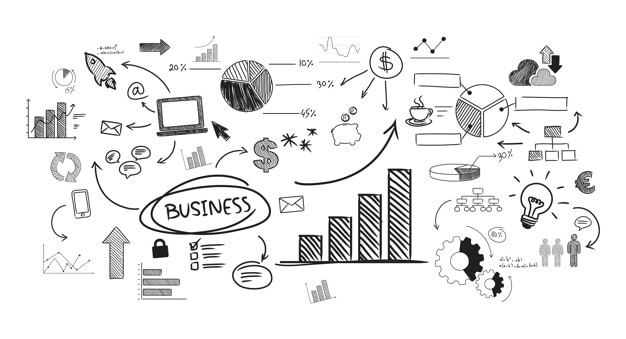Human resource strategy is referred to the long-term plans of the organization that are created to align the human assets with the business activities. It dictates HR practices and provides a well-meaning direction for all the major areas of the HR department, like recruitment, development, performance appraisal, etc.
Table of Contents
Key Dimensions of HR Strategy Framework
The key dimensions that should be addressed to develop an HR strategy framework are as follows-
1. Culture
It includes rules and beliefs of an organization
2. People
An essential part of an organization is the people or its employees or human resources. The potential, capability, and skills are what constitutes the people
3. Organization
It includes job descriptions, job types, design and structure of the organization
4. Human resource systems
It includes recruitment, training and development, communications and compensation and benefits.
Characteristics of Human Resource Strategy
The characteristics of Human resource strategy are described below-
- One of the significant characteristics of the human resources strategy is that it takes at least a year and sometimes more than that to implement it successfully
- It needs a proper analysis of the business entity and its external environment
- It lays the groundwork and gives an appropriate structure as well as direction to the human resources management activities
- An essential characteristic of human resource strategy is that it helps in the proper allocation of significant organizational resources
- The HR strategies are number-driven
- The human resource strategy has to be revised every year
- It leads to specific behavior
- The HR strategies include the thoughts of senior management in the HR department
How to Create a Human Resource Strategy Model
Take the following steps to create an effective HR strategy
1. Align HR and business needs
For a successful human resource, strategy develops a thorough understanding of the business needs. The next question that you should ask is whether the internal capabilities of the business is capable of fulfilling its objectives and achieving organizational goals. The function of HR at this point is to identify the core competencies and determine where it is strong and where the weakest.
Take the necessary steps to understand the business, its competitive advantage, and weaknesses that might relate to a lack of employee motivation or inability to deliver organizational performance.
This will prove a tremendous help in understanding the needs of the business and determining the goals and strategy for achieving desired results. Align HR and business needs if you are looking for the steps to create an effective HR strategy.
2. Developing HR strategy
Before developing a strategy, gain an in-depth knowledge of business goals. Understand your business model so that you can easily identify potential opportunities as well as threats related to the quality and quantity of human assets needed for your organization.
This step will lay the groundwork of HR strategy by successfully identifying the key components that a business needs for success. Identify required interventions and align them with business performance to leverage optimal organizational performance.
The HR team should be an expert in its field as developing the HR strategy is very important if you are looking for the steps to create an effective HR strategy.
3. Organizational performance
To create an effective HR strategy, pay attention to its organizational performance. What is an organization’s performance, and how does it relate to HR strategy is a vital query? Well, it is a process to manage goals and objectives in an organization.
It is one of the essential components that provide a rationale for HR activities. The organizational performance has a direct impact on business success, and it is the one that can boost the HR reputation and its contribution to the business entity. One of the HR functions is to create a strong and powerful performance management process that will highlight performance objectives for all the employees in the company.
Consider it as an opportunity to develop skills and set stretch targets for the business. An effective HR strategy also needs a strong review process for evaluating performances.
It provides viable feedback to the employees to let them know the areas where they have done well and the ones where they need to buckle up. The organization tries to identify the strengths and weaknesses of its employees to meet the development needs of the organization.
4. Organizational structure and design
It is one of the main elements required to meet customer needs effectually. It is a reflection of the management processes and is a determining factor in organizational flexibility.
Identifying structural strengths and weaknesses is an essential step of human resource strategy as the weakness encourages the organization to make necessary changes, and strengths help to support organizational competence. Align organizational structure and design with business strategy so that the organization can optimize its work-flow capability.
5. Strategic resourcing
It will be possible only when you have a clear picture of the organizational structure. Transparency and clarity are two essential elements that can give a proper idea about the key roles in the organization and define the skills and know-how that will be needed to fulfill them.
The HR department has a deep involvement in processes that are required to identify resourcing needs and attract the right employees. The accountabilities will prove a blessing in determining the actual requirements for importing external talent in strategic resourcing.
This is the time where every stage in the resourcing activity is aligned with strategic imperatives.
6. Organizational development
if you are looking for the steps to create an effective human resource strategy, then create an effective organizational development strategy. It is essential to pay special attention to it as it involves making changes as well as relevant improvements to the current workforce in the organization.
Organizational development changes occur at the team, individual as well as the organizational level to boost and achieve greater efficiency and performance. This step in the HR strategy aims at boosting business skills, their competencies as well as behavioral elements
7. Compensation and benefits
To create an effective human resource strategy, put your onus on strategies related to compensation and benefits. This step is also referred to as a reward strategy as it is about rewarding its human resources with motivation and incentives for successfully delivering organizational goals.
The purpose of the compensation and benefits strategy is to align the organizational performance with employee rewards. Essential elements of this strategy are to share options, profit sharing, bonus, base pay, and other benefits that the organization is willing to pay based on the ones offered by their competitors or market norms.
With changing times, organizations have included new practices like team bonus as an effective strategy to boost team performances
8. Organizational culture
Pay attention to the way the organization acts and interacts or in simple terms organizational culture. Align customer needs with organizational behavior so that it can create customer-centric behavior.
There has been increased competition in the consumer market around prices, quality, and variants of products, and the best way to deal with it is by improving customer service.
HR teams should be involved in every step to deliver effective solutions to the organization in gaining a competitive advantage over other rival brands.
HR Strategy Best Practices
Some of the HR strategies best practices are as follows-
- HR professionals need to be involved in the creation of HR strategies. When you are in a process from day one, you automatically start knowing about all the things about it. This will prove a blessing later when you need to communicate the human resource strategy to other stakeholders and at the time of implementation
- One of the best practices is the alignment of HR initiatives with HR strategy.
- HR budget and management buy-in are essential elements of effective strategy implementation
- Connect the performance incentives with the implementation of the strategy for its success. Employees tend to give their best if their goals and incentives are interlinked
- The best practices include regular monitoring and measuring strategies through KPIs.
- The human resource strategy is a long-term plan, and it should be adaptable to change
Important Components of a Successful Human Resource Strategy
Currently, human resources are one of the most important departments of an organization that creates strategies to achieve organizational goals in the most effective manner. The success is to a higher degree dependent on the following pillar
1. Employee engagement
Employee engagement and employee productivity go hand in hand and are often considered the sides of the same coin. It is a proven fact that employee engagement is one of the essential pillars on which the success of an organization depends.
Human resource strategy cannot be considered successful until and unless it has managed to boost the level of employee engagement. Include peer competition and achievement tracking in your strategy to increase employee engagement.
Both financial, as well as non-financial incentives, can prove a blessing as recognition of services rendered and rewards for it will reinforce positive behavior and attitude that is necessary for organizational success. Conduct surveys at regular intervals to let the employees know that the organization is involved all along the way and is working to boost employee productivity, performance, and satisfaction, and, of course, engagement.
2. Corporate image
Image is everything in the corporate world. The organizations which have been able to maintain a strong brand image have stayed at the top and enjoyed great success. A strong and powerful corporate representation is one of the essential components of a successful HR strategy.
Take the help of technology and innovation for promotional branding and greater visibility. It helps to attract and retain top talent in the industry.
3. Legal requirements
One of the most critical components of a successful HR strategy is taking care of legal requirements all along the way. Protecting your business from legalities is a necessity. Every employee in the firm must fill IRS W-4 as well as a 1-9 form.
The organization is obliged to include worker’s compensation insurance in the business insurance policy. This is a safeguard to protect both employees and businesses if any employee falls sick or gets hurt while working in a company.
4. Career development and advancement
The most precious asset of an organization is the human resources that help it to achieve all its dreams and desires. One of the essential components that ensure a successful human resources strategy is looking after the career development and advancement programs of its employees.
It boosts employee engagement, nurtures talent, lowers the rate of employee turnover, and increases employee retention. This occurs because the employees are given the chance of personal and professional growth.
When the organization implements a successful career development and advancement program with the help of training and learning sessions, it helps the workforce to set achievable goals and objectives that proves beneficial for them as well as the organization they work for.
5. Performance management system
One of the components of a successful HR strategy is an advanced performance management system. Until and unless you know where you stand in the scheme of things, it becomes impossible to take any corrective action.
The performance management system keeps track of the progress an employee is making. Looking at it, he can measure progress throughout the year and set achievable goals.
Conclusion
The human resource strategy is a result of the broader business strategies and is created so that it can contribute to the success of organizational performance. They are based on past activities and the present capabilities of the entity.
It is the human resource strategy that assists the organization in planning and achieving desired goals.
Liked this post? Check out the complete series on Human resources


